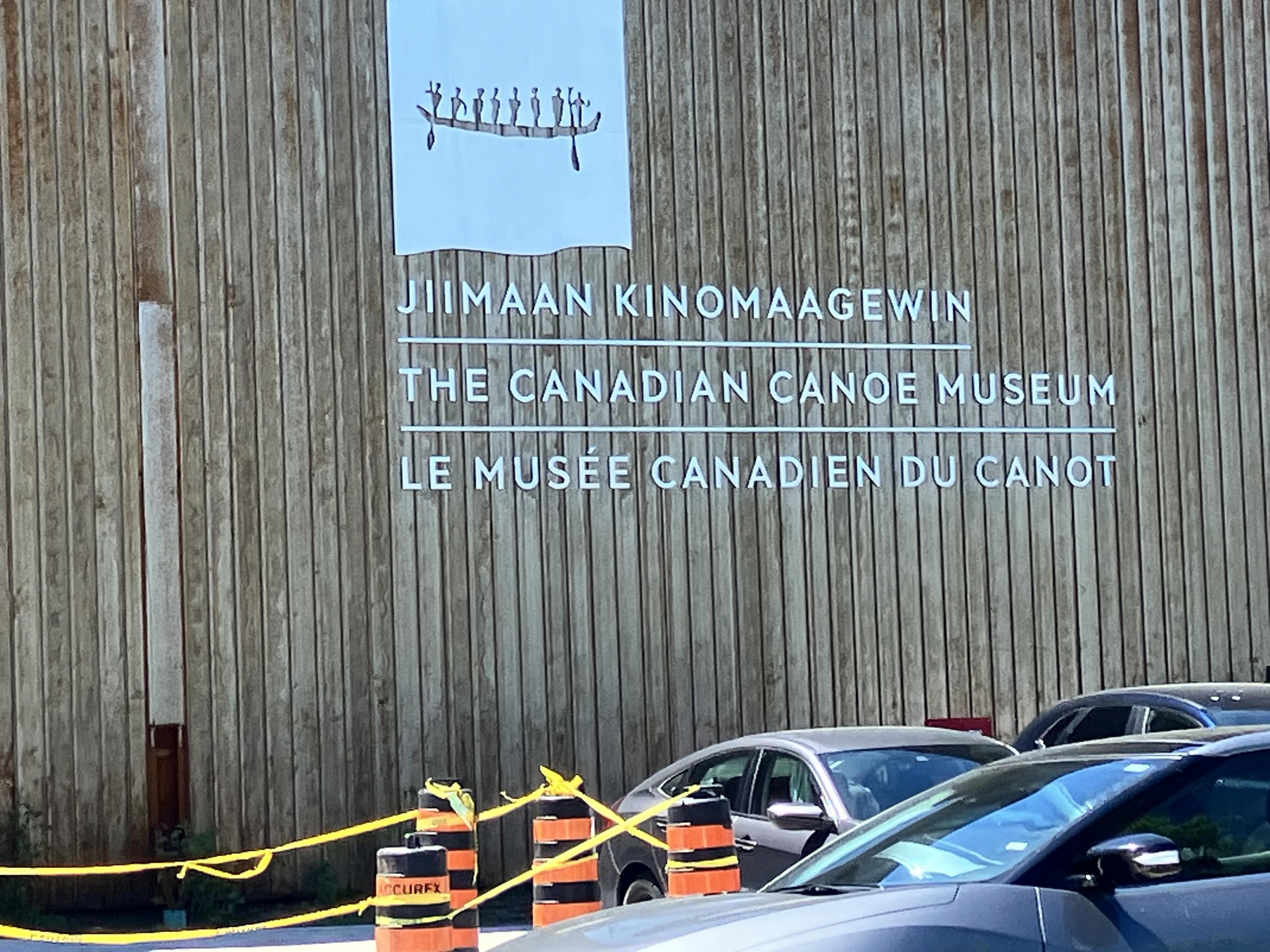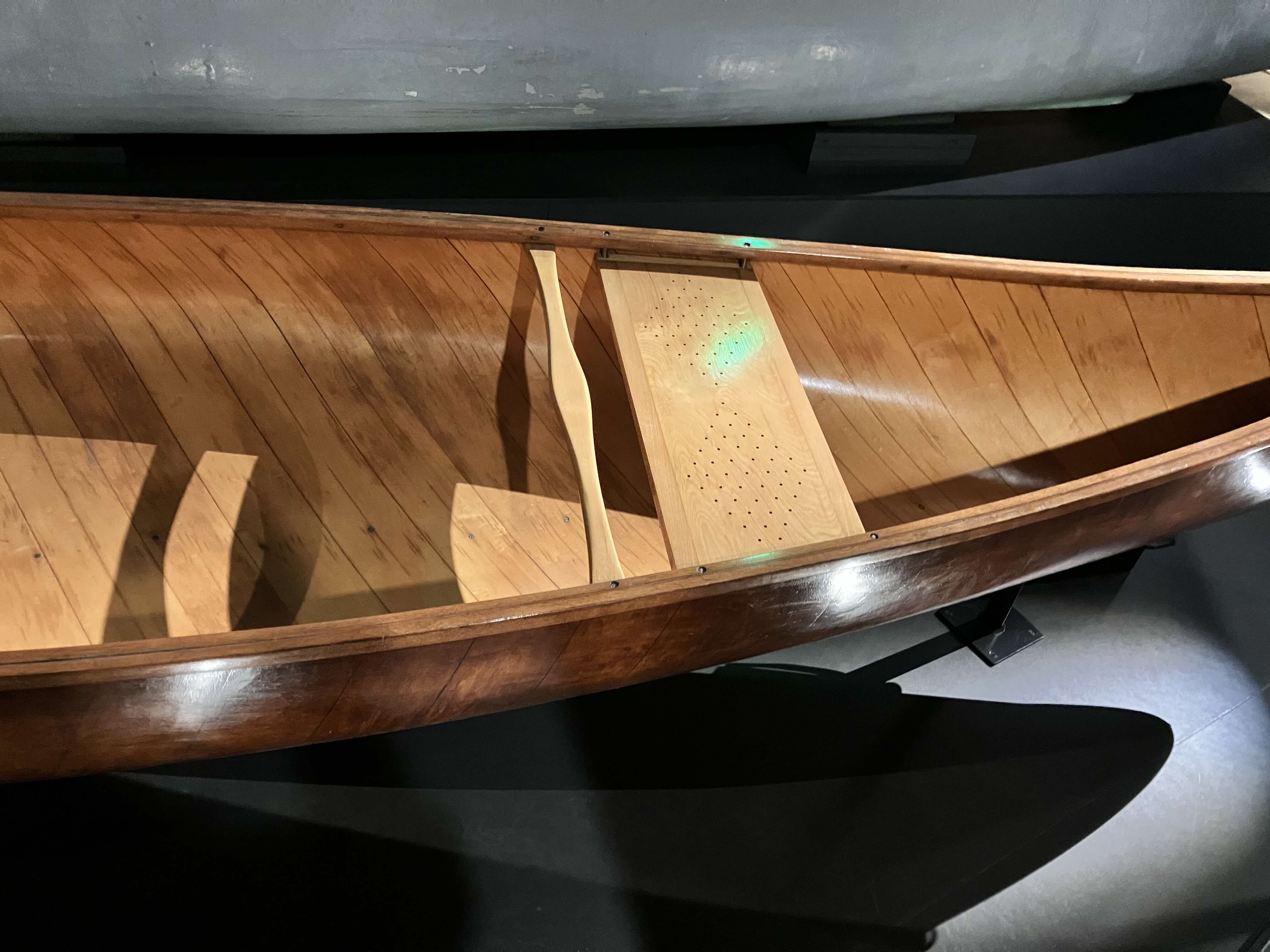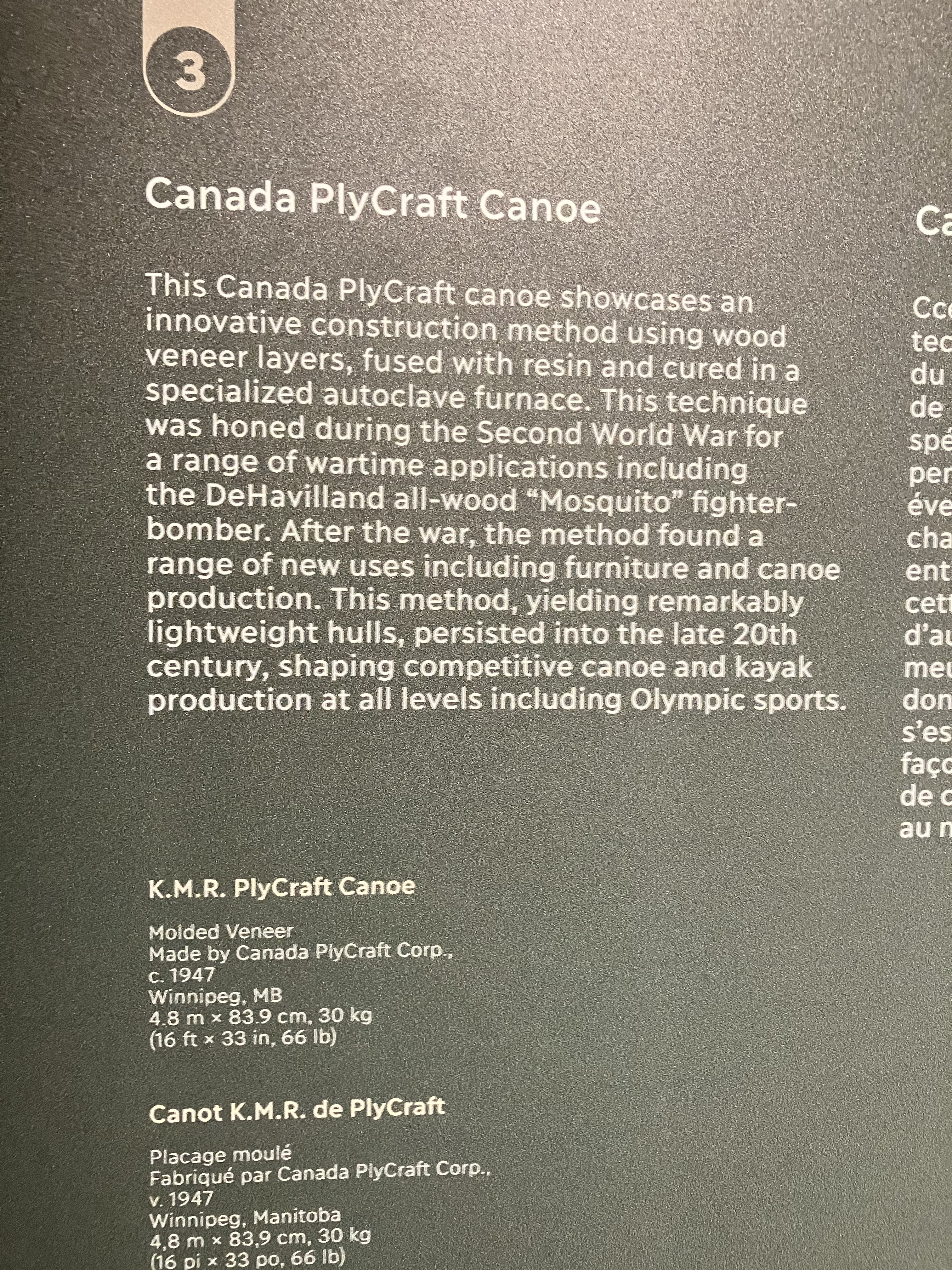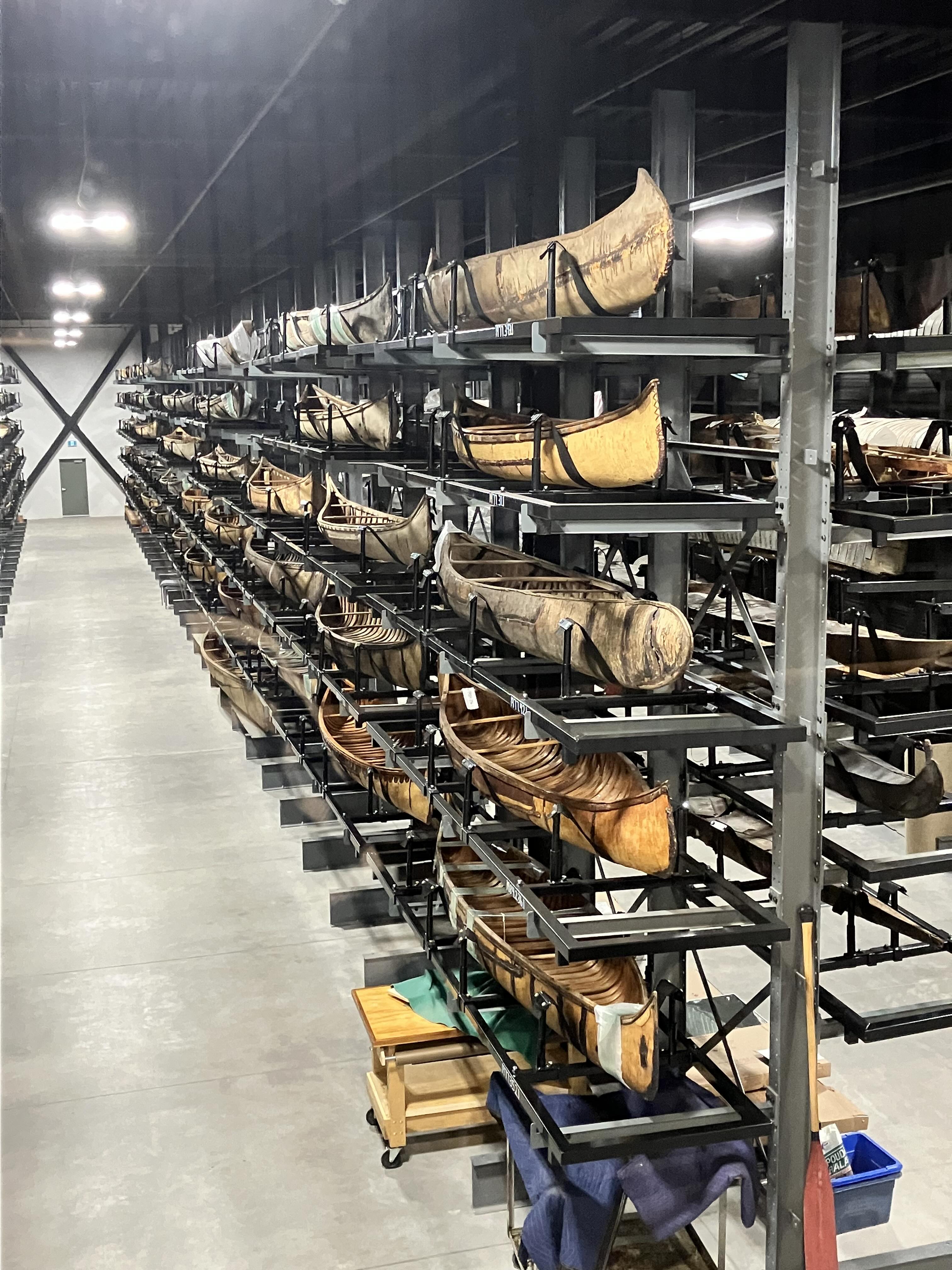
My father and I spent many of my childhood summers canoeing Ontario’s lake systems, counting moose and camping under the stars. Then I got into my teenage years and he saw my brain go into risk-seeking mode; We switched to whitewater. We paddled Northern rivers in areas where there were so many mosquitoes that, statistically, they could not all land at once. We saw caribou and muskoxen and the sorbet-coloured Smoking Hills. We wrapped our canoe around rocks and paddled to the Arctic Ocean.
So when The Canadian Canoe Museum announced it had opened a grand new facility, that little three-and-a-half hour drive from Ottawa to Peterborough, Ontario wasn’t going to get in our way. It was enough advertising for us to hear that you can walk in the front of the museum and canoe out the back.
A 20,000-foot exhibition space holds 6 exhibits showcasing Haida dugouts, birchbark canoes and their indigenous construction methods. It houses canoes owned by paddling legend Bill Mason and Prime Minister Pierre Elliot Trudeau (father of the current one). There’s even a 1920s canoe with a gramophone installed, for those of us who fancy eine kleine boatmusik. A thoughtful sconce away from the foot traffic deals with the lethal nature of paddling, honouring the 12 boys and one adult who died of hypothermia in the Temiskaming canoe tragedy of 1978.
Here’s a representative piece and its explanation:


In the equally-vast collection hall, the museum stewards 600 watercraft from ancient to modern in Class A archival conditions (pictured below).
In short, I heartily recommend the experience. While in Peterborough, you may also wish to explore Petroglyph Provincial Park, the largest known collection of Indigenous rock carvings in Canada.

All images by me, with apologies for the lack of artistry.
This is cool, Jessa! I grew up in northern Minnesota, paddling canoes when I could barely walk. Hunting, fishing, week-long canoe camping trips in the Boundary Waters, or day paddles just for fun—such great memories. Thanks for sharing this and the canoe museum; I hope to see it one day!